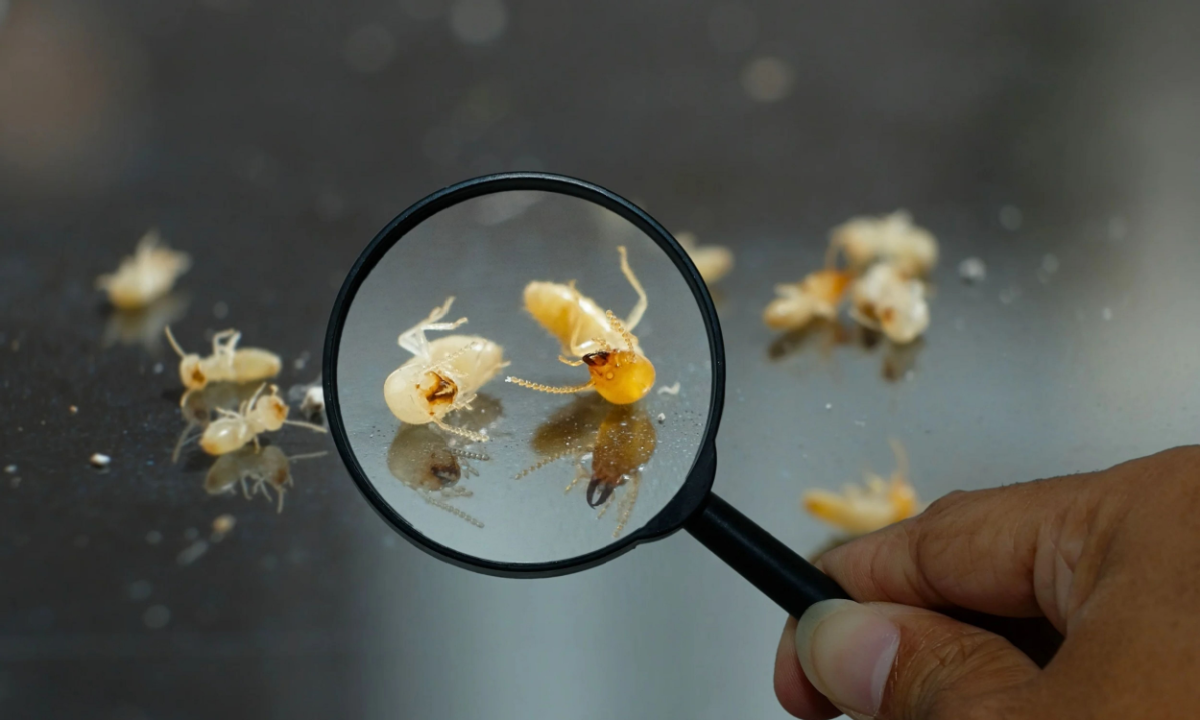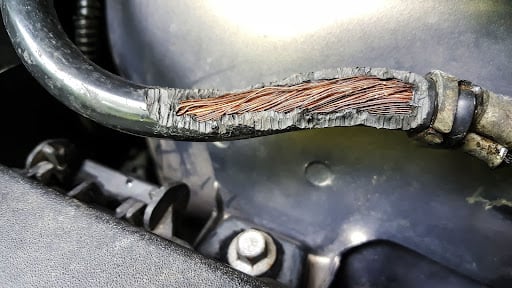Aside from the psychological trauma of seeing a pest in your home, many pests can carry diseases and harm your health.
While not all pests are dangerous, several species in New Jersey can be toxic or deadly.
To help you avoid these pests, we’ve listed the seven most dangerous bugs in New Jersey.
1. Black Widow Spiders
The black widow spider is one of several types of spiders in New Jersey, but it comes with the deadliest bite.
While not as common as the New Jersey brown recluse, Black widows have been observed across the state. Specifically, the Northern black widow, or Latrodectus variolus, can be spotted periodically throughout random parts of New Jersey.
Female Northern black widow spiders are easily identifiable by their glossy black bodies with white striations and red spots atop their abdomens and characteristic red hourglass on the underside. Male Northern black widows are smaller than females and feature similar markings without a distinctive, bulbous abdomen.
Female black widows possess a powerful bite loaded with neurotoxic venom that can cause severe illness in specific individuals. While black widow bites often cause no long-term effects, severe reactions may occur. For example, black widow bites may cause nausea, vomiting, painful abdominal cramps, light-headedness, shortness of breath, muscle pain, and localized swelling and irritation.
2. Kissing Bugs
Triatominae–also known as “kissing bugs” or “conenose bugs”–are a subfamily of insects in the United States, Central America, and South America. These insects feed on the blood of invertebrates that they nest alongside, including humans.
Kissing bugs are known to bite people on or near the lips and mouth, hence their nickname. While less common in the Northern U.S., kissing bugs are known vectors of Trypanosoma Cruzi–the parasite responsible for Chagas disease in humans.
When infected with Chagas, humans may experience a slow development of health issues, including severe heart conditions and digestion issues.
As a result, it’s best to avoid these dangerous bugs whenever possible. Fortunately, you can spot these insects by their ovular brown bodies, cone-shaped heads, thin antennae, and legs.
3. Spotted Lanternflies
While not directly harmful to humans or pets, the spotted lanternfly is an invasive bug in New Jersey with devastating effects on several important crops, including walnuts, grapes, hops, apples, and stone fruits.
This invasive planthopper is native to Asia but was first introduced to the U.S. in 2014 by vessels transporting cargo to Pennsylvania. Since then, the SLF population has significantly enlarged, wreaking havoc on the Northeast’s cash crops.
This insect is identifiable by its inch-long body, black head, yellow-striated abdomen, gray spotted forewings, and red hindwings. If you spot the insect, or its grayish, plaster-like egg sacks, it’s recommended to destroy them to prevent further spread and economic damage.
4. Asian Longhorned Tick
The Asian long-horned tick is an invasive species from Asia, initially found in New Jersey in 2017. Since then, the Asian longhorned tick has been found across six New Jersey counties, including Hunterdon, Union, Middlesex, Mercer, Bergen, Somerset, Passaic, Camden, and Monmouth.
Like most ticks, this particular variety is a vector for disease. It may also cause harm to animals due to blood loss in the event of a severe infestation.
Asian long-horned ticks are identifiable by their reddish-brown bodies and poppyseed size when unfed and pea-sized, gray appearance when filled with blood. These ticks are ovular in shape and lack antennae.
If you locate what you believe to be an Asian long-horned tick, it’s best to isolate the arachnid and place it in a sealed bag.
5. Wasps
New Jersey is home to various wasp species, including yellowjackets, paper wasps, and baldfaced hornets.
Wasps are social creatures and highly aggressive pests that will sting if threatened. Unlike honey bees, wasp stingers are not barbed, allowing them to sting multiple individuals multiple times throughout their lifetimes.
While most wasp stings cause localized pain, swelling, and redness, those with severe allergies to wasp venom can get anaphylaxis. If left untreated, anaphylactic shock can lead to death in adults and children, thus earning wasps a spot on this list.
If you spot a wasp’s nest on your property, it’s best to leave the insects alone if possible. However, contact a pest professional wasp control company to avoid injury if the nest is close to buildings or inhabited dwellings.
6. Mosquitos
Not only are mosquitos irritating, but they’re also potentially dangerous due to their propensity to spread disease. While uncommon, mosquitos carrying West Nile Virus, Zika Virus, Eastern Equine Encephalitis, and several other diseases have been found in the continental United States.
As the number one vector for Dog Heartworm, mosquitos also pose a severe threat to your pets. This parasitic roundworm is passed through the bite of an infected mosquito, where it quickly wreaks havoc on your pet’s internal organs, leading to lung damage and heart failure.
While mosquitos are relentless pests, taking the necessary steps to keep the insects away from your family and pets is essential.
7. Deer Ticks
Last on the list are deer ticks, another species known to be a vector for disease in humans. These arachnids can harbor such diseases as:
- Lyme Disease
- Anaplasmosis
- Ehrlichiosis
- Powassan Virus Disease
- Borrelia Disease
- Rocky Mountain Spotted Fever (RMSF)
Female deer ticks are identifiable by their reddish-brown color, black shield-shaped markings on the top of their abdomens, and black legs. Males are similar in appearance, though they feature primarily black bodies and are generally smaller than females.
If a deer tick bites you, it’s best to immediately remove it and contact your health professional, especially if you develop flu-like symptoms.
If you’re dealing with an infestation of any of the dangerous bugs listed above, contact your qualified local pest professionals at Anchor Pest Control. Our team of experts has provided New Jersey residents with thorough and cost-effective exterminator services for over 25 years and can clear your property of unwanted pests in no time.
Dangerous Bugs in New Jersey: FAQ
Which species of widow spider is commonly found in the Northeastern United States?
The Northeastern United States, including New Jersey, is home to the Northern black widow spider. This arachnid features a glossy black body, a large abdomen, and iconic black and white markings across its body, making it difficult to miss. Female black widows pack a dangerous bite, full of neurotoxic venom that may lead to serious health issues.
Where do Kissing Bugs get their name?
“Kissing Bug” is a nickname given to members of the Triatominae family due to their preferred preference of where to bite humans. These insects traditionally bite humans around their lips and mouth, thus the title!
Why are spotted lanternflies on the list?
While these dangerous bugs don’t cause direct harm to individuals, their voracious appetites for New Jersey’s cash crops can have a devastating effect on food availability and the state’s economy. As a result, any sighting of these insects should be reported, and any living adults or unhatched egg sacks should be destroyed.




